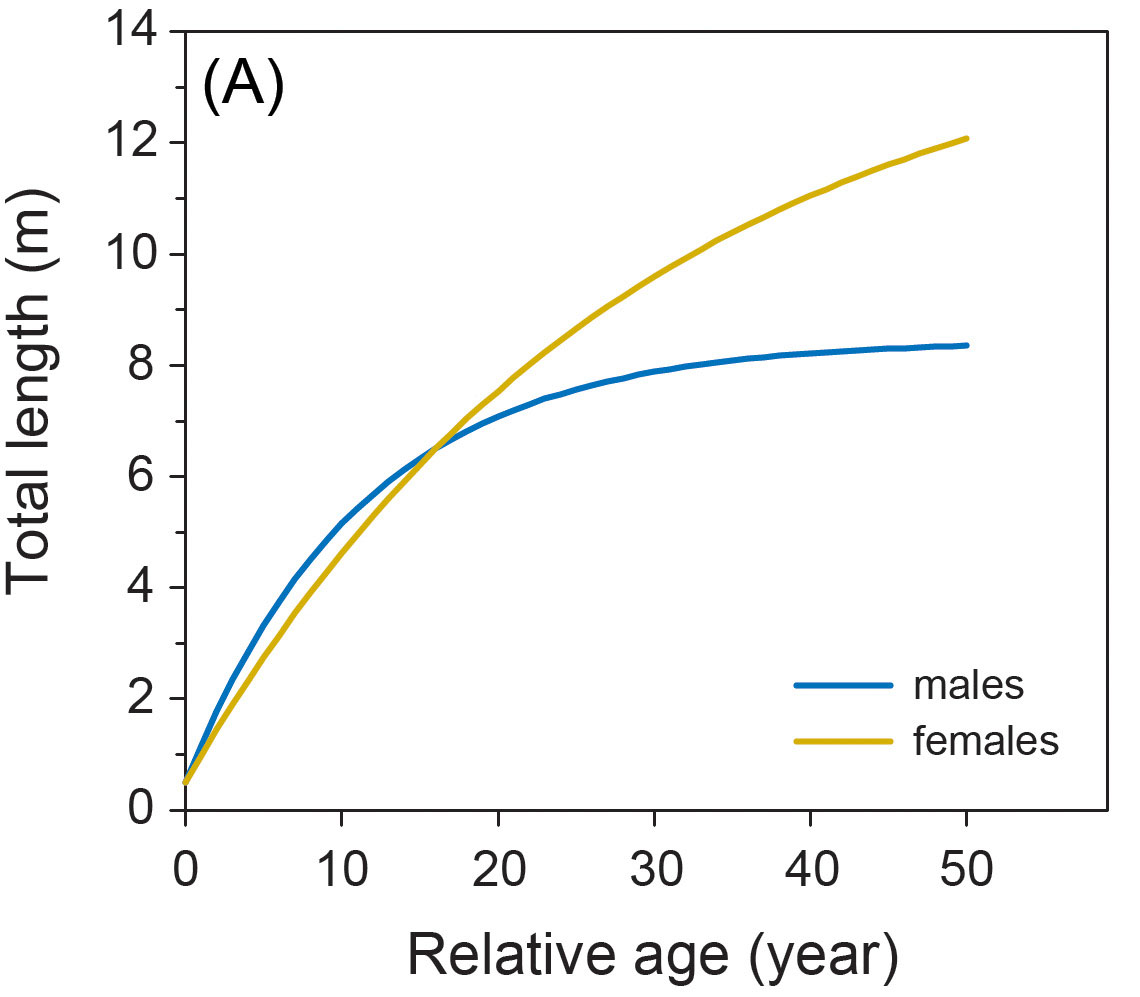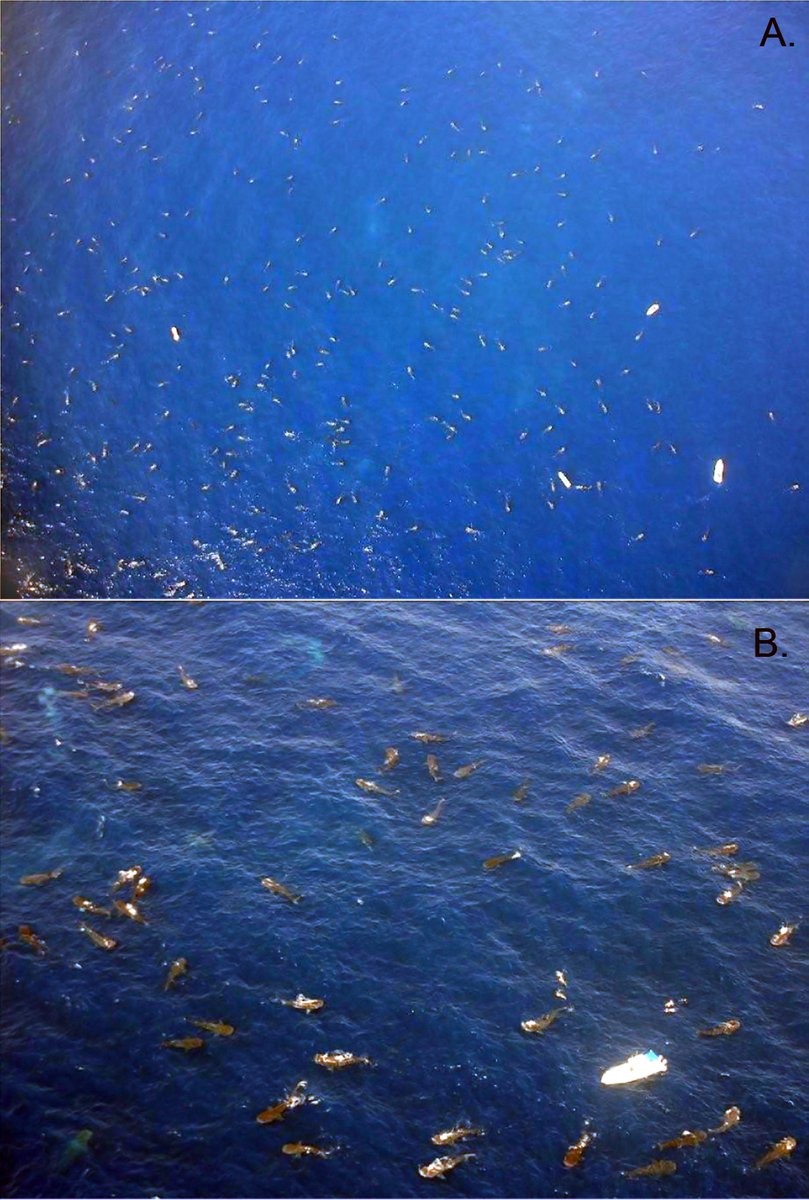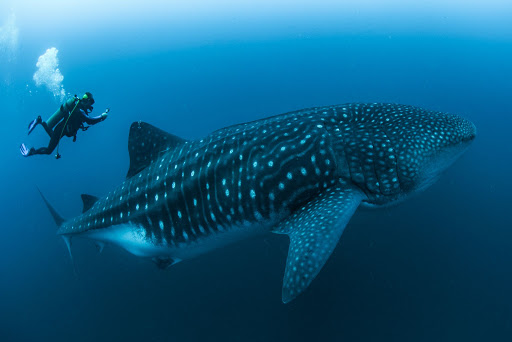I was happy to contribute some data from @GeorgiaAquarium to this new study by @MarkMeekan, @drbmtaylor & others, about the way that #whalesharks grow https://www.frontiersin.org/articles/10.3389/fmars.2020.575683/full">https://www.frontiersin.org/articles/...
We showed that male whale sharks grow faster than females when they are young, but flatten off at around 8-9m (asymptotic), while females continue to grow throughout life (non-asymptotic).
Maybe the coolest thing about this study is that it offers and explanation for coastal constellations (gatherings) of whale sharks and why they are dominated by juvenile males
Males likely need more food energy early in life to sustain their faster growth rate. Coastal upwelling sites are rich feeding grounds, so this may be why these constellations are predominantly juvenile males.
It may also explain why we can never seem to find giant males they way we do with huge females in, say, the #Galapagos. It& #39;s not that really big males are hiding somewhere, it& #39;s that there aren& #39;t any, or many anyway. Pic: @simonpierce
Hey @IsabellaGornall & @sofia_blount, I thought you dig this thread

 Read on Twitter
Read on Twitter




